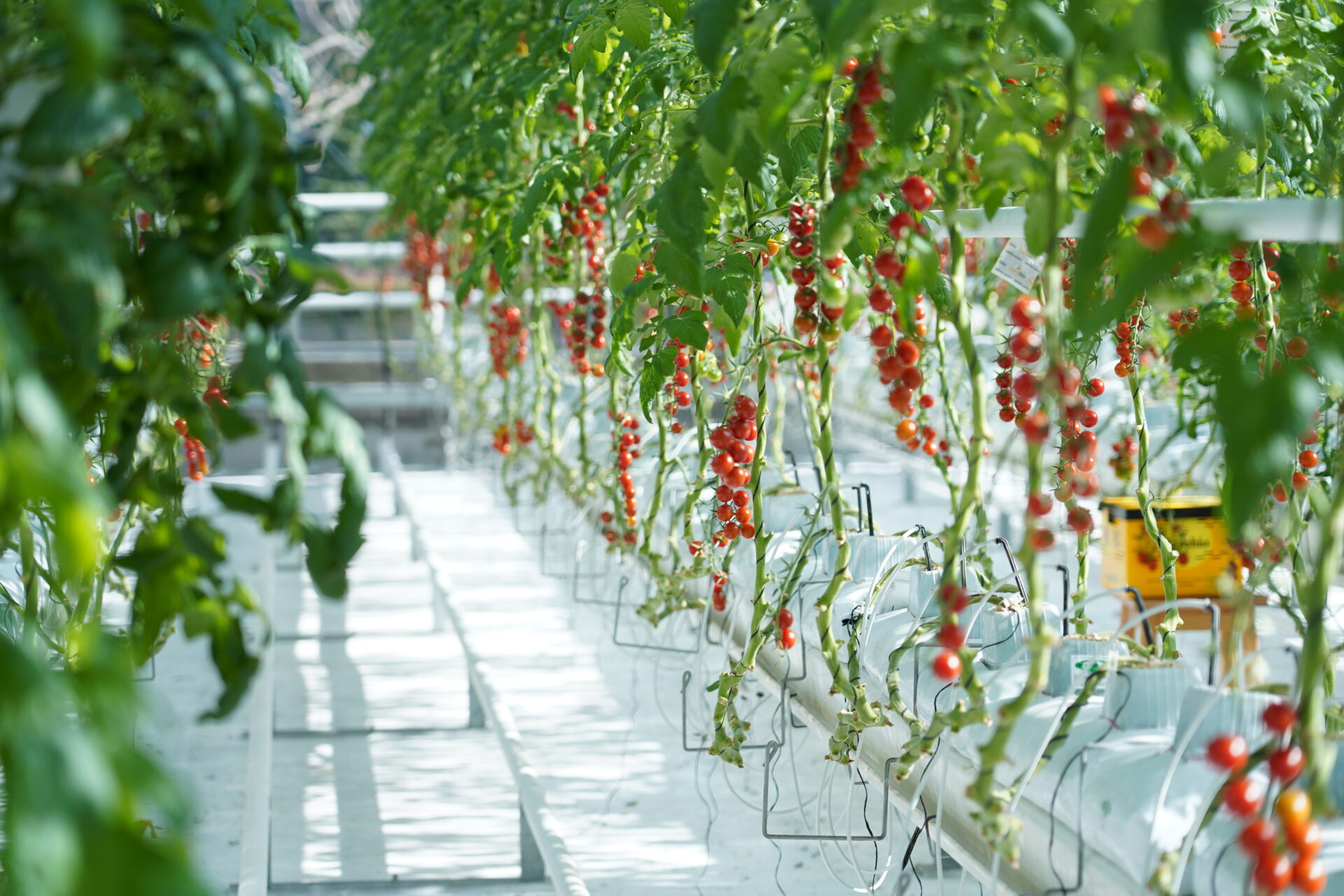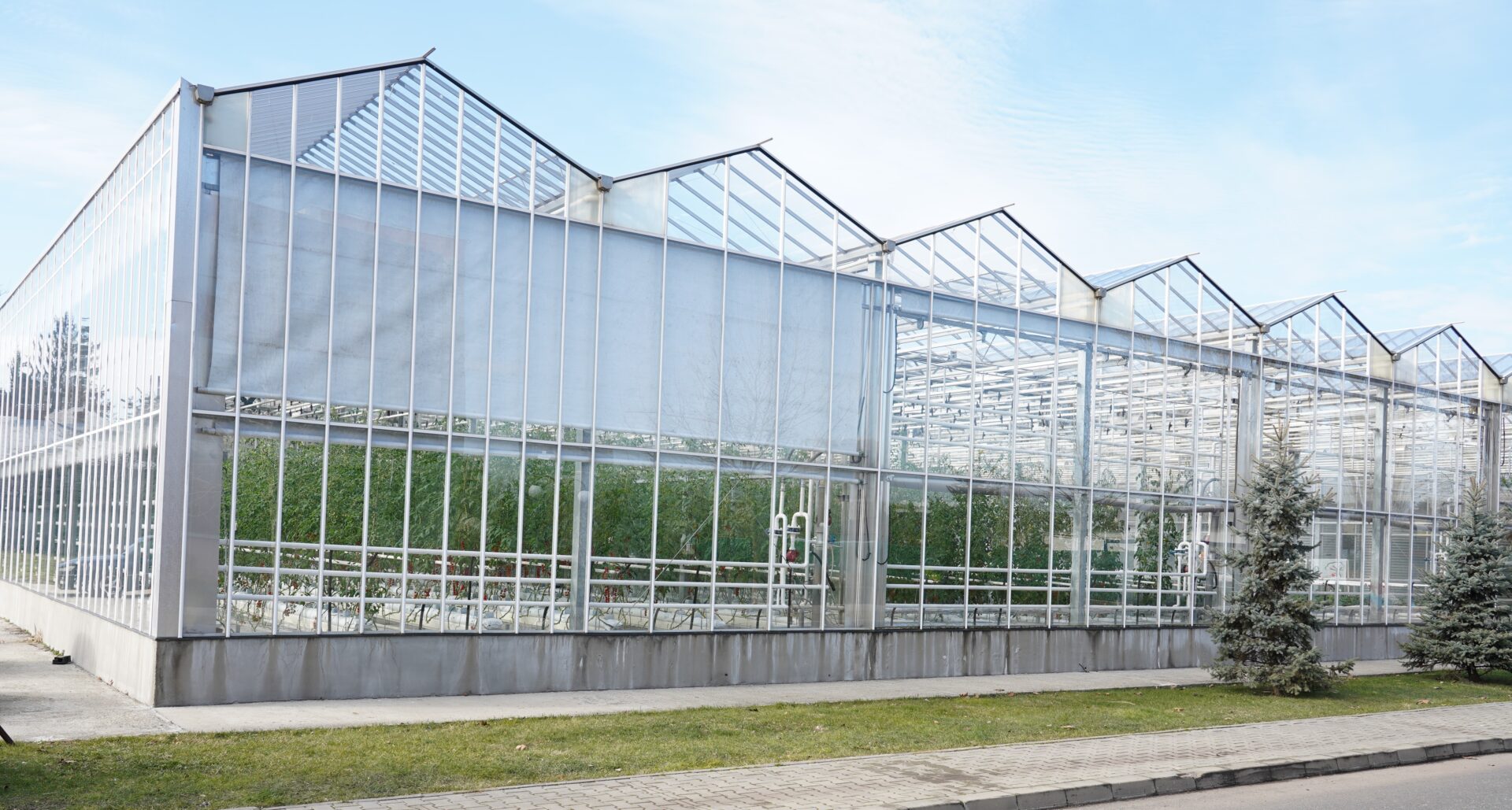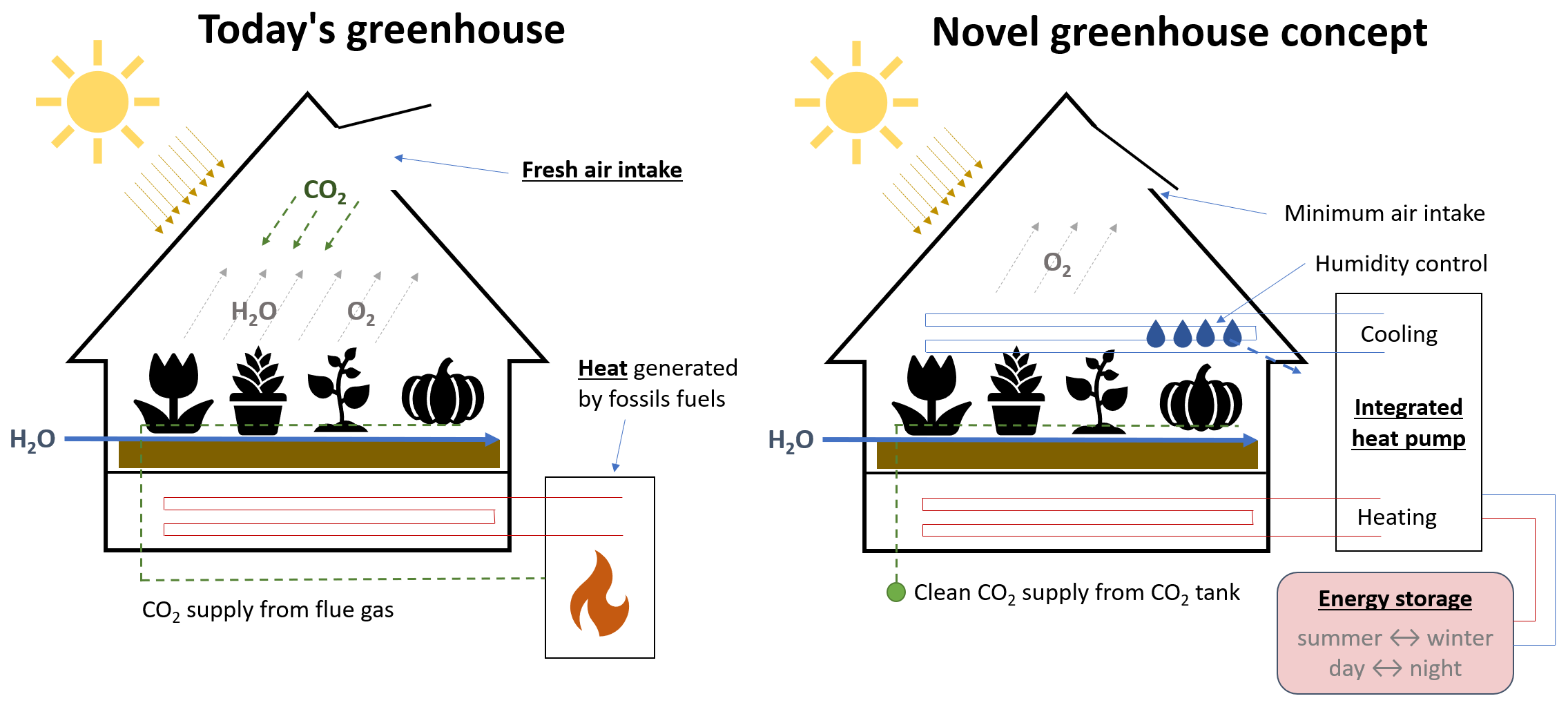Co-authors: August Brækken (SINTEF Energy Research) and Michael Bantle (SINTEF Energy Research)

Not only can greenhouses contribute to a more sustainable and emissions-free food production, but the controlled environment can also result in faster growth and higher yields. This is what the ClimaGreen project in Romania aims to demonstrate.
Agriculture and climate change
Agriculture accounts for a significant amount of the greenhouse gas (GHG) emissions that are causing climate change. At the same time, agricultural production is adversely affected by global climate change. Extreme weather conditions in the form of heavy rainfall, floods, heatwaves, and droughts are already negatively impacting crop production, and the pressure on agricultural food systems is likely to increase in the years ahead. On top of this, global population growth requires a substantial increase in food production by 2050, implying that food sustainability is a major global issue.
Therefore, if we are to mitigate climate change and safeguard a future food production centered on health and sustainability, the agricultural industry must step up its transition to adopting more resource-efficient and climate-friendly technologies.
Greenhouse farming
Sustainable production of fruits and vegetables in greenhouses is a viable alternative for ensuring food supply for a growing human population. Greenhouses offer favourable growing conditions and protect the crops from external threats such as extreme weather conditions and various pests. Furthermore, greenhouses with satisfactory heating and cooling amenities enable extended growing seasons as well as crop production outside the typical season or geographical location. Therefore, greenhouse farming allows crops to be produced in a controlled environment, leading to faster growth and higher yields. A benefit of this is that greenhouse operation requires less space than traditional outdoor production, which means that greenhouses can be located close to cities or urban areas where property is otherwise too scarce or expensive. This has the advantage of food only needing to travel short distances to the markets and where people live, thereby keeping the cost and environmental impact of transport to a minimum.
Agriculture in Romania
Agriculture in Europe is characterised by huge differences in farming methods, climatic conditions, and efficiencies between the various countries. Therefore, while the Netherlands accounted for 6.3% of the EU’s standard output of agricultural products in 2016, based on 1.8 million hectares of utilised area, the corresponding figures for Romania were 3.3% of the EU’s standard output from 12.5 million hectares of utilised area.
In Romania, outdoor agricultural production is much more common than indoor crop production in greenhouses. However, the agricultural productivity is relatively low, and the potential is underused. One reason for this is the very large number of small-scale farms, typically employing inefficient production methods. In fact, Romania accounts for almost one third of the number of farms within the EU, of which more than 90% are smaller than 5 hectares.
Greenhouse farming used to be quite common in Romania, but since the fall of the communist regime in 1989, many greenhouses have become outdated and areas for indoor cropping have decreased. However, in recent years, there has been a growing interest in modern and high-performance greenhouses. The focus is on increased efficiency and higher yields in order to minimise imports and cover the domestic demand for locally produced fruits and vegetables.
The ClimaGreen project
Energy-efficient climate control of a greenhouse for increased productivity (ClimaGreen) is a multidisciplinary research project that aims to prolong the growing season and increase the productivity of a Romanian university greenhouse through optimised indoor climatic conditions. The main objective is to demonstrate through proof of concept that heat pumps and thermal energy storage can be integrated into the operation of the greenhouse in order to minimise the energy needed to control the greenhouse’s climatic conditions.
Read more: Heat Pump Technology

The research greenhouse is located at the University of Agronomic Sciences and Veterinary Medicine of Bucharest (USAMV), Romania. The main challenge of the greenhouse is to maintain cool and optimal growing conditions during the hot summer season. With daytime temperatures occasionally reaching 35°C to 40°C in July and August, the indoor greenhouse temperature can rise to more than 65°C during the summer months. Such temperatures are obviously too hot for greenhouse plants and vegetables, and they will cease to grow and perish long before reaching these extreme temperature levels.
An efficient operation of a greenhouse requires a precise control of the indoor climatic conditions, determined by the temperature, humidity and CO2 concentrations. For greenhouse operations in northern parts of Europe, the focus of temperature control is on heating. The climatic conditions of Romania, characterised by hot summers and cold winters, mean that both energy-efficient cooling and heating are required throughout the year.
A novel, energy-efficient greenhouse concept
At USAMV, a novel, energy-efficient greenhouse concept will be implemented, wherein the integrated heat pump system provides both cooling and heating as needed. Currently, the greenhouse is heated by a gas-fired boiler, which is activated even in the summer to generate the CO2 needed for the plants. On hot days, the greenhouse is cooled by roof ventilation. However, this ventilation system is not sufficient, as the roof vents are too small to be able to regulate the temperature to acceptable levels. In addition, the ventilation leads to a loss of CO2, and it is more difficult to control the humidity levels.
The novel concept enables the greenhouse humidity to be controlled through condensation and subsequently recycling the condensed water for the plants. The fossil-fuelled gas boiler will be replaced with an integrated heat pump system, and pure and clean CO2 enrichment will be provided from an installed CO2 tank. Although the roof ventilation will still be needed for cooling on very hot days, its use will be kept to a minimum to better control the humidity and CO2 levels in the greenhouse. In addition, thermal energy storage of the seasonal excess heat will be employed in the new system. Borehole thermal energy storage (BTES) will be used to store summer heat in the ground for winter usage. BTES will also be combined with short-term dynamic thermal energy storage in the form of a large underground water tank to utilise the temperature variations between day and night.
Read more: Thermal energy storage

A valuable Norwegian-Romanian collaboration
Recently, a ClimaGreen workshop was held in Bucharest with representatives from USAMV, SINTEF Energy Research, and Gether AS present. The workshop had a high-profile attendence with participation from Professor Adrian Asănică, Dean of Faculty of Horticulture at USAMV Bucharest, and Thorstein Wangen, Councellor of the EEA and Norway Grants at the Royal Norwegian Embassy in Bucharest. Professor Asănică stressed the high importance of the ClimaGreen project and the valuable Norwegian-Romanian collaboration, while Mr. Wangen gave a presentation on the role of the Norway Grants in research and science. The workshop included a visit to the USAMV greenhouse and technical discussions on the details of the proposed prototype system.
ClimaGreen is funded by the Norway Grants, which is part of the agreement between the EU and Norway to reduce economic and social disparities in the European Economic Area through a separate Norwegian Financial Mechanism. The project is coordinated and led by the University of Agronomic Sciences and Veterinary Medicine of Bucharest (USAMV), with SINTEF Energy Research and Gether AS as Norwegian partners.

0 comments on “Energy-efficient Climate Control of Greenhouses”